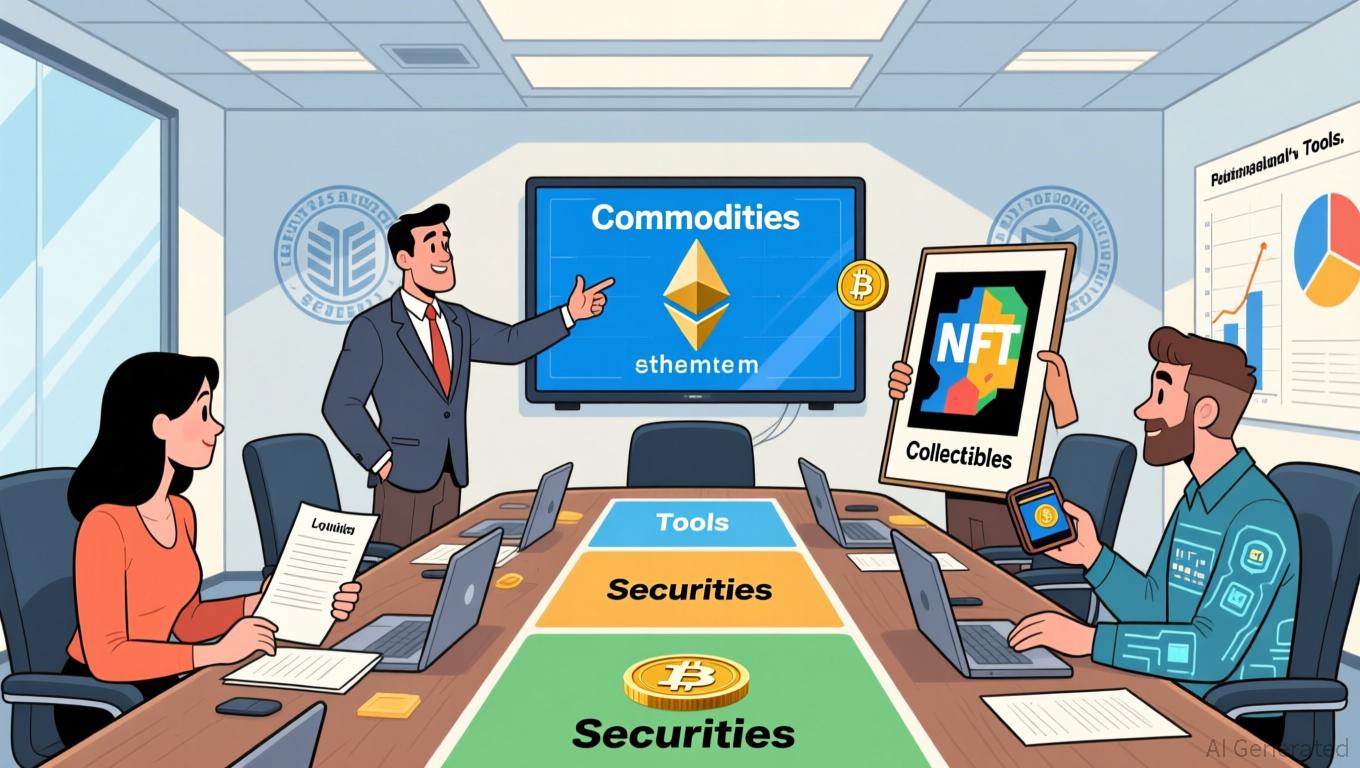Ethereum Updates: SEC Guidelines Allow Cryptocurrencies to Achieve Commodity Classification
- SEC Chair Paul Atkins proposed a crypto regulatory framework exempting ETH, SOL, and XRP from securities classification using the Howey Test to clarify market roles. - The framework categorizes crypto assets into four groups, allowing tokens to "graduate" from securities to commodities as ecosystems decentralize and utility emerges. - It introduces "super apps" for mixed-asset trading and a six-month compliance grace period, aiming to balance innovation with fraud prevention and reduce regulatory fragmen
SEC Chair Paul Atkins has introduced a comprehensive set of regulations for digital currencies that could transform the U.S. crypto sector, excluding leading tokens such as
Atkins’ guidelines divide crypto assets into four main categories: securities, commodities, collectibles, and utilities. Tokens that support decentralized networks will typically not be considered securities once their ecosystems are sufficiently developed, as users interact with them for their practical use rather than to gain profits from centralized control
The foundation of this framework is the Howey Test, which determines if an asset involves a monetary investment in a shared venture with profits coming from the work of others. Atkins explained that tokens are only deemed securities if there are clear, direct promises of profit linked to managerial actions. As networks become more decentralized and tokens shift from investment contracts to functional assets, they may be freely traded as commodities

The framework also introduces a six-month transition period for issuers to resolve compliance issues, aiming to decrease enforcement actions and promote timely adjustments as networks develop
Experts have welcomed this policy shift as a possible driver for institutional participation, with Chainalysis reporting that over 80% of major digital assets now operate in decentralized networks
Atkins’ comments reflect a wider philosophical perspective: the SEC’s original mission, established during the Great Depression, was never meant to cover all digital assets. “Securities laws were crafted to address issues involving reliance on others’ expertise,” he noted. “They were not intended to govern every new type of digital value”
Disclaimer: The content of this article solely reflects the author's opinion and does not represent the platform in any capacity. This article is not intended to serve as a reference for making investment decisions.
You may also like
Ripple Launches Major XRP Airdrop as Community Growth Accelerates
Quick Take Summary is AI generated, newsroom reviewed. A major XRP airdrop was promoted by @BCIC_Karnataka on November 15. The initiative aims to reward every XRP holder as the community grows. It may include Midnight's NIGHT token airdrop requiring a non-custodial wallet. XRP ecosystem support programs are underway, including grants and accelerators. Ripple is expanding aggressively with nearly $4 billion in acquisitions this year.References X Post Reference
Upexi Drops $50M Buyback Bombshell — SOL Treasury Could Send Shares Into Orbit!
Quick Take Summary is AI generated, newsroom reviewed. Upexi approved a $50 million open share buyback on November 13, 2025. The company will repurchase shares opportunistically on the open market. Upexi reported $9.2M revenue in Q1 2026 and $66.7M net income. The SOL treasury forms a large part of Upexi’s net asset value.References X Post Reference
Bitcoin Drops After U.S. Shutdown Ends — History Repeats Itself
What’s the Latest Outlook for XRP? Here Are the Critical Levels That Must Be Protected and Overcome